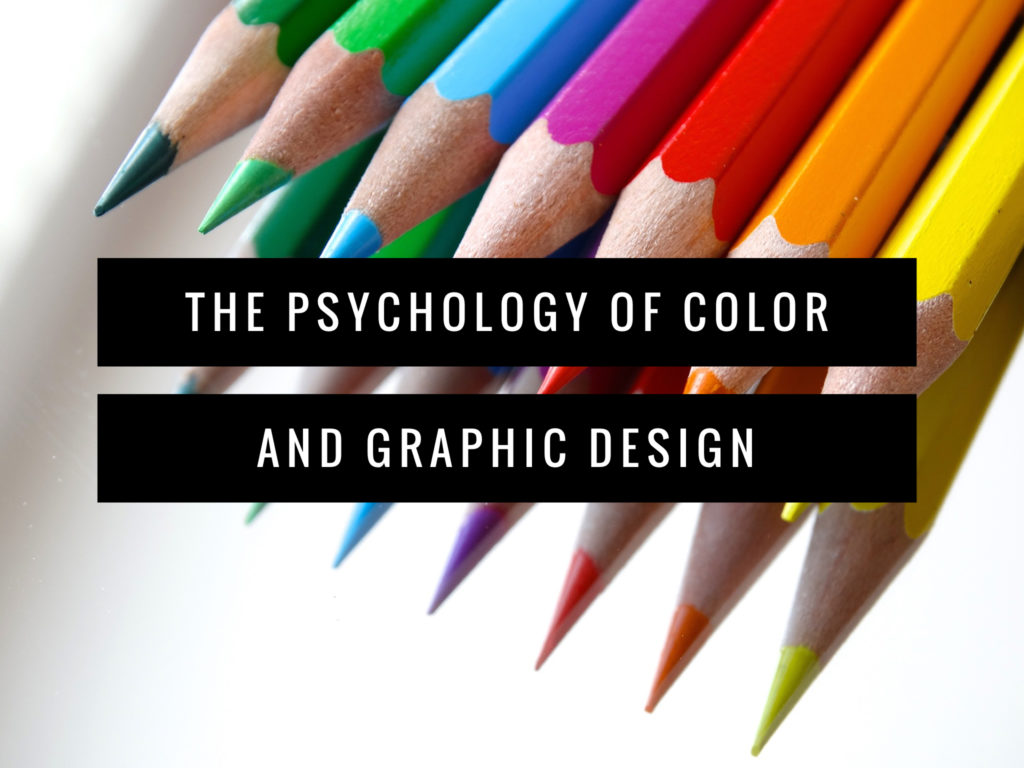
Color plays a crucial role in graphic design, as does the psychology of how humans perceive color. Here is a look at the ways that color and psychology affect the graphic design process.
Color psychology
Color psychology is the study of how colors determine human emotions and behaviors. We react to colors based on a complex series of interactions between our personal tastes, our family upbringing, and our cultural background.
Color can affect perceptions in subtle ways; for example, it can enhance or detract from the way that food tastes. The right colors can even enhance how effective pills and placebos are; blue is used for calming or sleep-inducing pills whereas red or yellow are usually used for stimulants.
Every brand and business uses colors deliberately in their product designs, packaging, advertisements, and websites. High-level graphic design relies in part on the ability to select colors that work with the brand and the company’s mission. The psychology of color can and must be used to trigger the right responses from consumers, and this is part of the graphic designer’s goal.
Great graphic design also anticipates cultural differences in the way colors are perceived. The same color can mean very different things to different audiences; for example, in most cultures yellow has a bright, cheerful connotation, but in China it may have vulgar or adult connotations. In the US white symbolizes purity and is often used for bridal branding, but white is a mourning color in Japan, India, China, Korea, and the Middle East. The bottom line here is to know your audience and choose wisely.
Colors in focus
Take a closer look at each type of color and individual color:
Warm colors
Red, orange, and yellow and their tertiary variations are the warm colors. In general they are positive, passionate, happy, enthusiastic, and energizing.
Red (primary color)
Positive associations: passion, strong emotions, excitement, love, confidence, comfort, warmth.
Negative associations: danger, anger, violence, fire, warfare.
Common design uses: bright red as an accent color; dark red, in combination with gray and white, for a professional, elegant look.
Orange (secondary)
Positive associations: excitement, energy, health and vitality, friendly, enthusiasm, beauty, earthiness, seasonal change, affordability, and warmth.
Negative associations: none.
Common design uses: Food and drink websites often use orange as it stimulates appetite.
Yellow (primary)
Positive associations: warm, cheerful, attention-grabbing, happiness, hope.
Negative associations: anger, frustration, caution/danger, cowardice, deceit.
Common design uses: Soft yellows for products and services involving children; golds and darker yellows for an antique look and a feeling of long-lasting appeal or permanence.
Cool colors
Green, blue, and purple and their tertiary variations are the cool colors. In general, they are more reserved, relaxed, professional, and calming than warm colors.
Green (secondary)
Positive associations: nature, growth, health, new beginnings, money, renewal, calm, abundance, soothing, fertility, good luck, harmony, balance.
Negative associations: jealousy, envy, greed, lack of experience.
Common design uses: designs related to nature, renewal, stability, and wealth. Brighter greens are most common for vibrant, energizing designs, olive greens are most commonly used to signify the natural world, and darker greens best to signal affluence and stability.
Blue (primary)
Positive associations: authority, calming, conservative (but can also mean liberal political values), masculine, non-threatening, peaceful, refreshing, reliable, responsible, serene, stable, strength, tranquil.
Negative associations: sadness, depression, distance, vulgarity and adult themes.
Common design uses: Baby blues for baby and young children’s products; light blues for calming and relaxing effects; bright blues for a refreshing, energizing feel; dark blues for corporate designs and other places where reliability and strength are important.
Purple (secondary)
Positive associations: magical, creative, mysterious, spiritual, imaginative, luxurious, royalty, romance, wealth, and military honor.
Negative associations: none.
Common design uses: light purples for pampering, beauty, and romance; dark purples for luxury and wealth.
Neutrals
Neutral colors are critical to graphic design because they’re so often functioning as the backdrop and expected to produce the right effects in concert with brighter accent colors. However, neutrals can also speak volumes on their own and carry their own sophisticated meanings and messages.
White
Positive associations: cleanliness, bridal, innocence, virginity, healthcare, purity, goodness, and peace.
Negative associations: cold, dull, bland, impersonal, uninspiring, and sterile.
Common design uses: As a backdrop white lets other colors shine; white can be used to create minimalist designs as well; white can also convey summer and winter.
Black
Positive associations: magic, Halloween, power, fashion, elegance, mystery, wealth, and formality.
Negative associations: death, evil, intimidation, mourning, control, bad luck, and the occult.
Common design uses: used to convey an edgy, mysterious, or elegant feel. Black is also the default color of typography.
Gray
Positive associations: professional, formal, sophisticated.
Negative associations: depressing, dull, moody.
Common design uses: corporate designs, backgrounds, and typography.
Brown and beige
Positive associations: earthy, down-to-earth, warm, family, dependability, steadfastness, comfortable, and reliable.
Negative associations: dull, dirty.
Common design uses: backgrounds, especially for natural looking wood and stone looks, and as a substitute for black typography or backgrounds.
Conclusion
Graphic design takes far more than selecting color combinations that look nice. Careful consideration of colors to produce specific desired effects is just one part of the graphic designer’s job. This means that a deep understanding of the psychology of color and knowing and how to use each color strategically is a core component of successful graphic design.